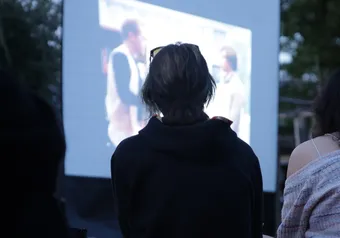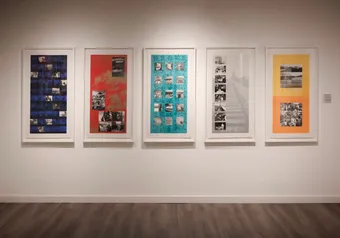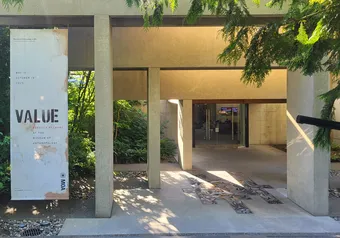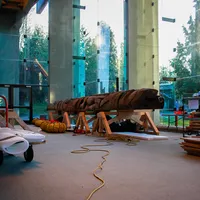The Xicanx: Dreamers + Changemakers exhibition at the Museum of Anthropology (MOA) celebrates the resilience, grit and creativity of Xicanx artists. Xicanx is a gender neutral alternative to Chicano/a, a term for the Mexican-American community which encompasses a legacy of decolonization, labour activism, mestizo (mixed-race and Indigenous) identity, immigration, Queer feminism and more.
The exhibit opens into a colorful 'neighborhood' with walls painted in vivid colors to divide up the space into little streets. At first, the narrative of the exhibit is joyful, almost playful, as Alejandro Diaz’s Make Tacos Not War welcomes you by the entrance.
Then, it punches you in the gut when you least expect it with creative responses to the xenophobia, police brutality and labor exploitation which has shaped many Xicanx communities.
Carlos Frésquez’s Salon de los Ilegales hits especially hard, inserting the “illegal” immigrant into otherwise pristine thrifted landscape paintings, representing and disrupting the common stereotypes of Mexican immigrants as interlopers.
The exhibit is a collection of pieces that celebrate the resiliency and diversity of a community while mourning its losses and sharing its grief. But, it’s also a call to political and social action.
“Chicanos have continued to fight for what’s their rights and they're doing that in all sorts of ways,” said curator Jill Baird in an interview with The Ubyssey. “I think there's ways to say that people [are] pushing towards social justice and human rights but also seeking to have places to put their own personal identity out into the world … That's dynamic and inclusive and hopeful.”
Baird curated the exhibition alongside Greta de León, executive director of The Americas Research Network.
According to Baird, the exhibition is relevant to both the global context of our times and to issues in Vancouver. It stands against war and demands respect for marginalized communities — issues which are as relevant now as they were in the 1960s and 70s, when the contemporary Chicano tradition of protest artwork originated.
The artwork traces from the 1960s and 1970s El Movimiento, the Chicano civil rights movement which began in the southwestern United States. Some of the artists’ work at MOA dates back to that era, while others are more contemporary – creating a conversation about social movements, identity and activism across time and space.
The exhibition reveals the interplay between different identities – to be Mexican and Indigenous and American at the same time. While some of the pieces focus on celebrating Xicanx culture and traditions, themes like police brutality are laid out for the audience to confront.
Raul Servin’s Immigrant Couple, for example, tells the story of a family and how their lives were impacted by the SB.4 bill that forced local public officials to cooperate with federal officers on immigration cases.
“If we try to make every experience comfortable, we are no doubt erasing some of the intention and the emotion and issues that the artists are trying to raise,” said Baird.
The key is finding the “balance” between highlighting each artist's distinctly powerful message, while weaving the pieces together into the broader uplifting story of the exhibit, according to Baird.
“[For the] most part we tried to balance it by moving artwork around and having it in conversation with each other but in … what we call the ‘activism section’, we chose not to,” said Baird. “... There’s a place for you to sit down and go ‘oh,’ breathe deep, ‘oh my goodness,’ shed a tear if you feel it.”
“Even though there's some edge to the show, I feel there's also a lot of hope,” she added.
The exhibition is open until January 1, 2023.
First online
Share this article












